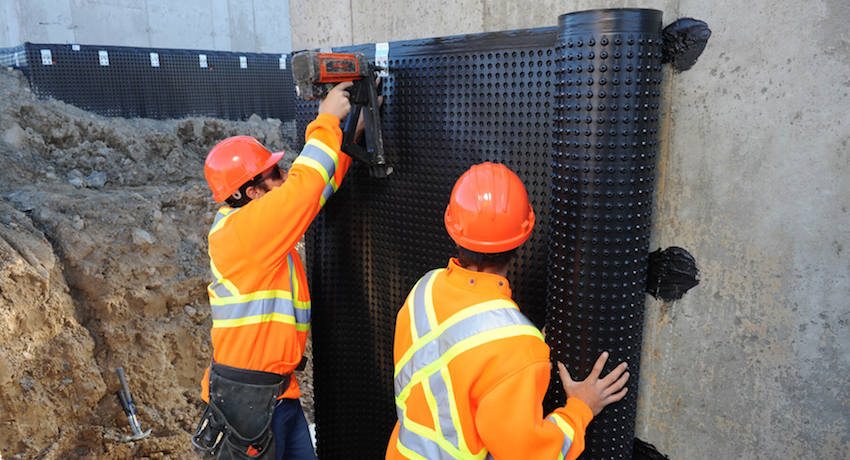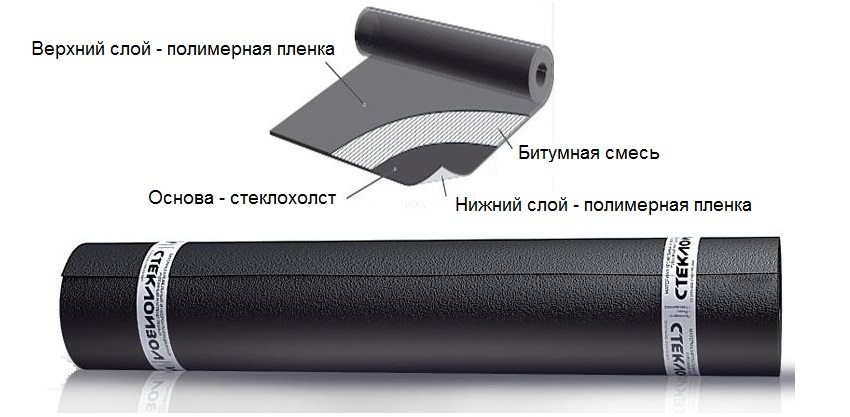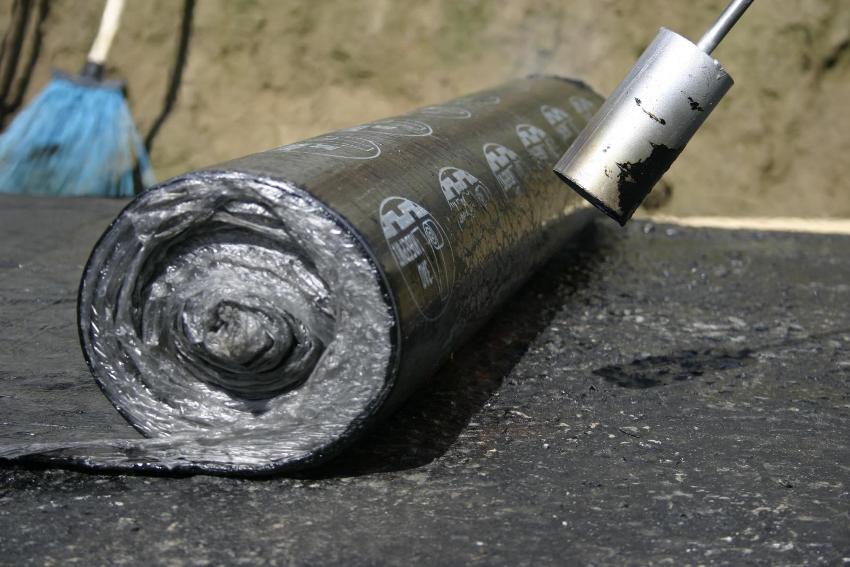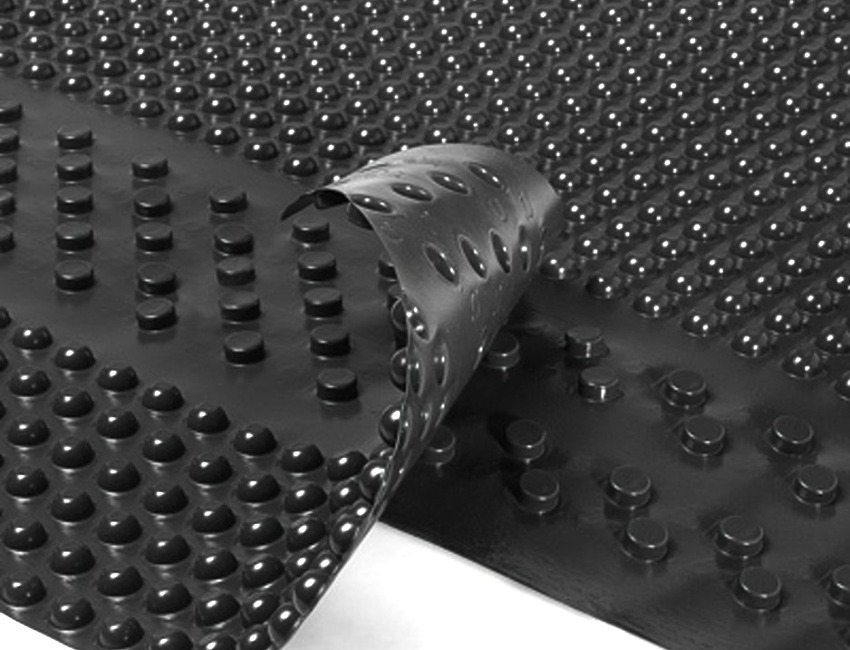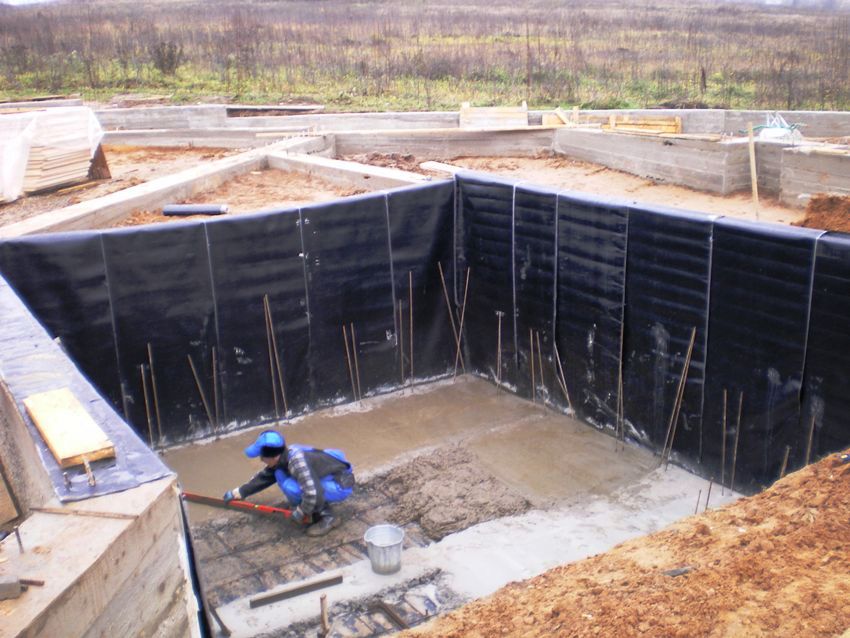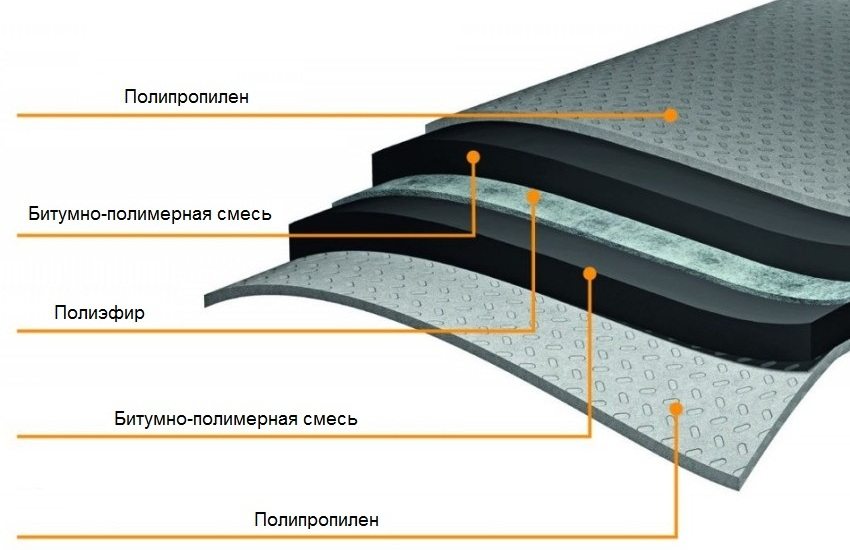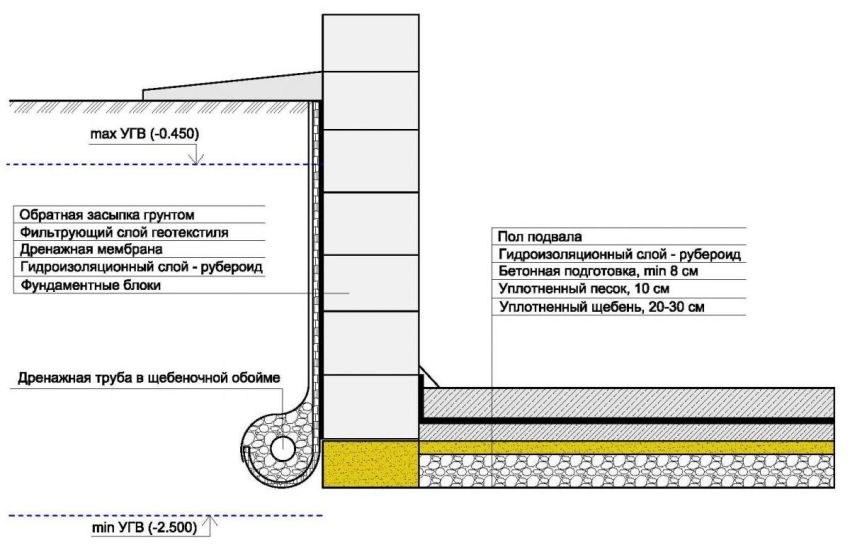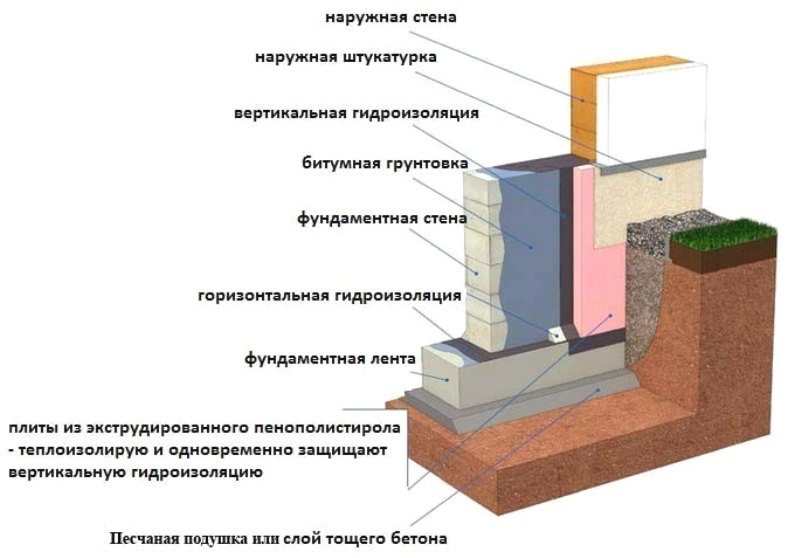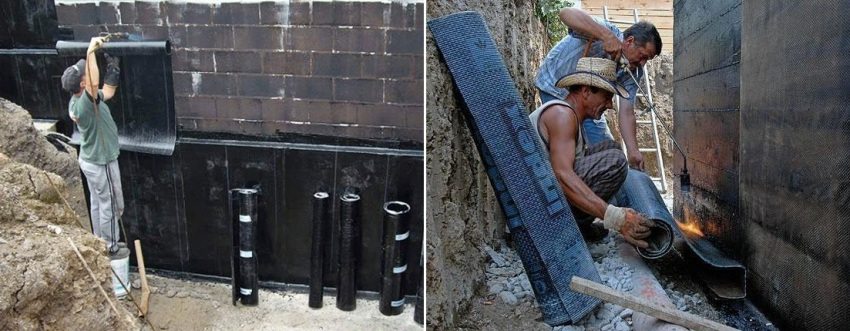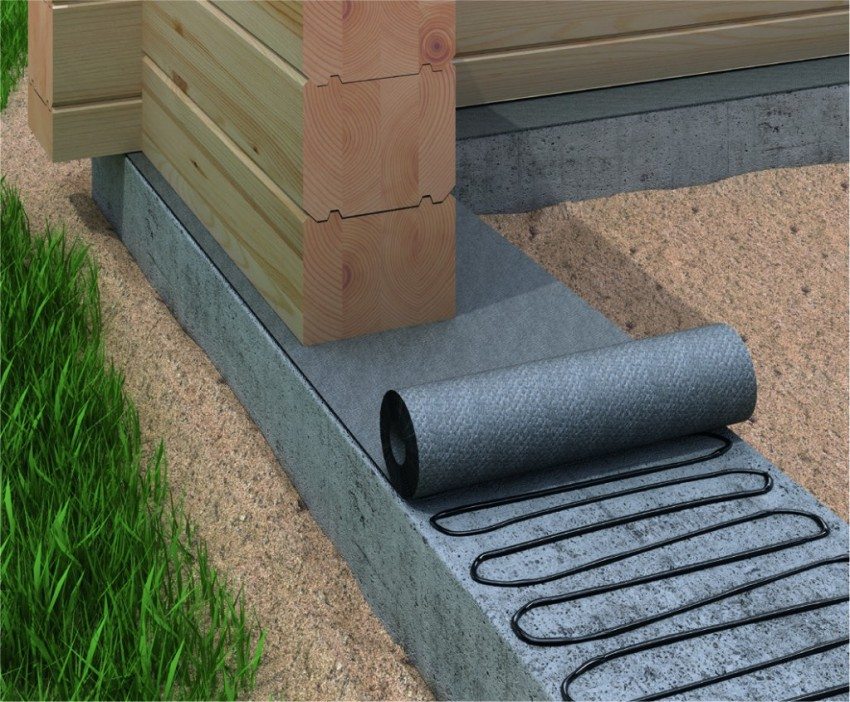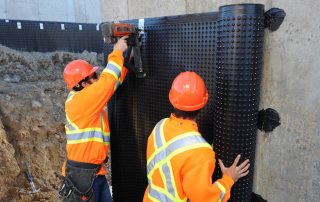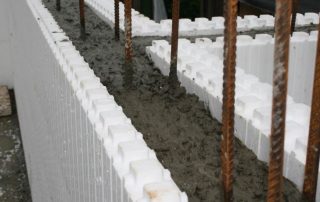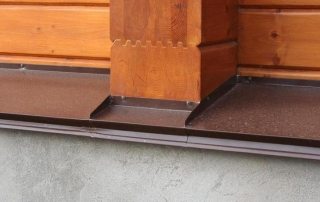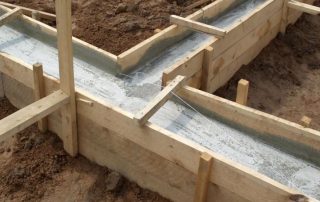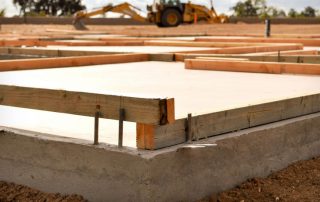Waterproofing the foundation with roll materials is the most effective and frequently used method of protection against the damaging effects of moisture in the concrete base of buildings and structures. The strength and durability of such an important structural element as a foundation depends on the quality of the implementation of waterproofing work. Contrary to popular belief, it is not so difficult to make high-quality waterproofing of the foundation with your own hands. There are a lot of videos of the whole process with step-by-step comments in the public domain. Here we will consider information about the main waterproofing materials for the foundation and the technology of their application to the surface.
Content
Classification of roll waterproofing materials
All waterproofing roll materials produced by the modern construction industry are usually divided into 3 main types:
- Roll materials of the gluing type. They are strips of waterproof material with different composition, rolled into rolls. Installation is carried out by sticking to the surface to be protected, using adhesive mastic or, already applied to the material, an adhesive layer. For quality protection, several overlap layers are applied. The most famous materials of this type are: roofing material, glassine, glass-insulated.
- Materials exposed to heating with a burner or a building hair dryer during installation. Waterproofing of the foundation with roll materials by fusion method ensures very good adhesion to the protected surface. The softening effect of a special bitumen or polymer layer occurs with strong heating.
- Diffusion modern film membranes. This is a technologically advanced material, which, due to a special device of pores, is able not only to protect against external influences of moisture, but also removes water vapor from inside the room. Thereby, foundation, waterproofed in this way, retains strength and integrity for a very long time.
The first two types of roll materials are used for gluing waterproofing. The technology of each material has its own nuances, but there are general rules for all of them.
Technology of gluing waterproofing
From the name itself it is clear that such materials must be glued to the protected surface of the foundation. This is done in several steps:
- Prepare the surface by cleaning it from dirt, leveling irregularities and smoothing out sharp corners.
- Application of primer mixtures, including special primers that increase adhesion to the concrete surface.
- Covering the foundation with mastics, which further increase the adhesion to the foundation.
- Direct installation of roll material by gluing several layers according to the instructions attached to it.
- Applying an additional layer of mastic to the surface of the material.
- The device is a protective or decorative layer in the form of brickwork or sheet materials, under which thermal insulation is made.
- Drainage works with partial filling of the foundation with soil. To do this, at a distance of 1 meter from the wall, they dig a trench around the house, into which a drainage pipe is laid.
- Construction of the blind area. Its width should be 60 - 100 cm.
Waterproofing the foundation with roll-up materials of the pasting type has a low cost, but is often associated with the need to carry out "dirty work" and the use of open sources of fire.
Useful advice! When device blind areas around the building it is necessary to waterproof it with the same material as the foundation. This will provide additional protection against water flows from the roof and channel them away from the foundation.
Varieties of membrane waterproofing materials
Waterproofing membranes were recently invented. They are made of polymer materials using a special technology that provides excellent protection of the foundation from ground and surface waters. Installation technology makes such waterproofing very resistant to settlement and deformation of the foundation. Membrane materials are available for both vertical and horizontal waterproofing.
The vertical outer walls of the foundations experience significant constant loads from the surrounding soil. For such surfaces, a profiled membrane is intended, which is able to distribute the load evenly over the surface. On the outside of the material there are spike-like protrusions that perfectly protect the membrane from pressure. Moisture accumulates on them, which flows freely into the drainage device.
Waterproofing of the foundation with roll materials with a smooth structure is carried out while protecting its horizontal surfaces. The smooth film does not allow water to rise through the soil capillaries to the base of the foundation.
Installation of films for vertical and horizontal waterproofing is carried out using different technologies. The spiked membrane is welded with a construction hairdryer to special metal-plastic guides fixed to the walls of the foundation. The smooth film is simply overlapped and then welded with hot air.
Waterproofing the foundation with roll materials: vertical method
Work on the installation of waterproofing the foundation with roll materials of membrane type using the horizontal method is carried out in the following order:
- Careful preparation of the base plane. The foundation is cleaned of all types of dirt and all protrusions and protruding pieces of reinforcement are ground. In case of severe pollution that cannot be eliminated, geotextiles are glued to the foundation.
- Internal corners are reinforced with a special tape or polymer mastic. You can, in addition, install fillets on them.
- Every 1.5 m in length and 2 m in height, rondels are attached to the surface, which are necessary in order to weld the membrane sheet with hot air on them.
- The material is cut to fit the foundation. The stock for allowances is left 10 cm.
- With a building hairdryer, the material is welded to the rondels at several points. To find the required temperature, you need to experiment. It is especially necessary to boil the joints with high quality. This should be done with a double seam every 20 mm.
Useful advice! Smooth membranes must be glued on top with geotextiles. For this, use a special glue. This coating protects the waterproofing from damage. There is no need to protect studded and profiled materials.
Do-it-yourself foundation waterproofing: video and description of the horizontal method
Horizontal waterproofing is arranged to protect the bottom surface of the foundation from groundwater. There are a lot of videos on how to make such a foundation waterproofing with your own hands. However, it is worth breaking down the process in detail.
Since the film is subject to colossal loads from the entire monolith, the base must be prepared very well. At the bottom of the foundation trench, a sand cushion is laid, which is carefully compacted and leveled. Its thickness can reach 10 cm. Geotextiles with a density of 400 g / m2 are placed on the pillow.2 overlap with a 15 cm allowance, which is welded with a hot air stream. A membrane is already laid on the geotextile with an overlap of 10 cm.
Useful advice! At the joints, the membrane must be double-welded to form a closed pocket, which is then inflated with a compressor to check the tightness. The pressure in this cavity should be kept for about 20 minutes. If this condition is not met, the welding procedure is repeated.
On top of the waterproofing material, another layer of geotextile is laid, the density of which is 500 g / m2... It compensates for the load and provides additional protection against damage. On top, a polyethylene film with a thickness of 200 μm is additionally laid. This will prevent the concrete from flowing to the waterproofing layer. After that, the foundation monolith is poured. This can be considered a completed horizontal waterproofing of the foundation with your own hands. The video of this technology allows you to clearly see all the nuances of the process.
High-quality waterproofing of the foundation with roll materials ensures its reliable and long-term operation, which affects the durability and safety of the entire building.
